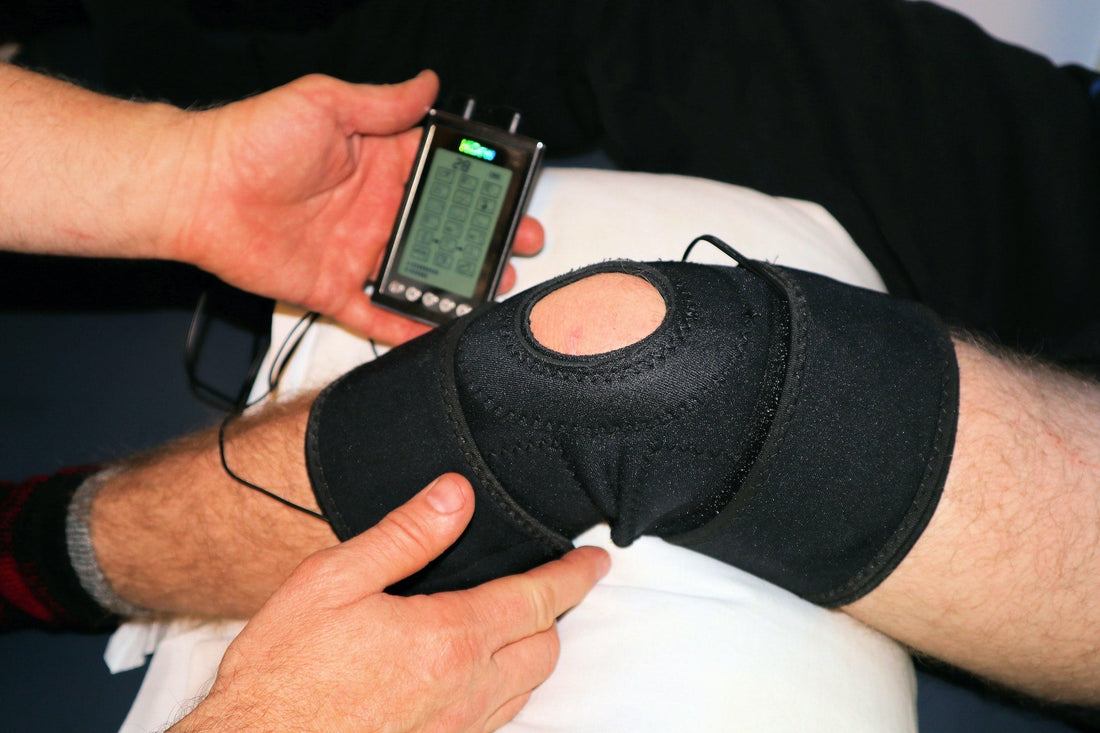Experiencing a "locked knee" can be alarming – that sudden inability to either bend or straighten your leg. Given how frequently we use our knees, they are unfortunately prone to both acute injuries and gradual degeneration, either of which can lead to this unsettling sensation. At VanCity Physio, we understand the frustration and concern a locked knee can cause, and we're here to help you navigate its complexities.
It’s crucial to know that not all "locked" knees are the same. There are two distinct types: Pseudo Locked Knee and True Locked Knee. Understanding the difference is vital for knowing what steps to take.
Understanding a Locked Knee: Pseudo vs. True Lock
1. Pseudo Locked Knee
A pseudo locked knee occurs when severe knee pain triggers your knee muscles to spasm and contract involuntarily. This intense muscle tightening is your body's automatic defense mechanism, restricting knee movement to prevent further damage.
-
What it feels like: You'll experience significant pain when trying to bend or straighten your knee, a brief locking sensation, a feeling that the knee is "catching," or a general sense of looseness or instability.
-
The key difference: While it's incredibly painful and feels "stuck," the knee joint itself is not physically obstructed.
-
Common Causes of Pseudo Lock:
-
Pain resulting from a knee injury
-
Inflammation from an injury or degenerative joint disease like osteoarthritis
-
Plica syndrome, an inflammation of the knee joint tissue
-
Patellar maltracking, where the kneecap doesn't move correctly in its groove
-
2. True Locked Knee
A true locked knee is a more serious condition where something physical is blocking the knee joint, preventing it from moving at all. The joint gets literally stuck in one position and cannot move.
-
What it feels like: The primary symptom is a complete inability to straighten your knee. You may or may not experience pain. Other signs can include chronic stiffness, a popping sensation, or feeling a physical "bump" at the site of the obstruction.
-
Common Causes of True Lock:
-
Meniscal Tear: The menisci are two C-shaped cartilage cushions in your knee. If one tears, a fragment can break away and get caught in the joint, causing it to lock. These tears often occur from forceful twisting or rotation of the knee.
-
Loose Bodies in the Knee: Fragments of cartilage or bone can detach and float within the joint, eventually becoming lodged and causing locking. These can result from injury or osteoarthritis.
-
Patella Dislocation: If your kneecap moves out of its normal position, it can cause the knee to lock, particularly during extension.
-
Severe Knee Joint Inflammation: Significant swelling and inflammation of structures within the knee joint can physically prevent the knee from extending. This can be due to injury, overuse, or osteoarthritis.
-
When to Seek Help: Crucial Next Steps
The treatment for a locked knee depends entirely on its type and underlying cause.
-
If you suspect a Pseudo Locked Knee: Your best course of action is to come see one of our physiotherapists at VanCity Physio. We can assess the underlying pain and muscle spasms, and work to restore your knee's normal function.
-
If you are experiencing a True Locked Knee: This is a medical emergency. Go to the nearest emergency department as soon as possible. A physical obstruction often requires immediate medical intervention to restore joint movement.
How Physiotherapy Supports Your Recovery
For pseudo locked knees, physiotherapy is the primary treatment. We will identify the source of your pain (injury, inflammation, plica syndrome, patellar maltracking) and use targeted techniques to:
-
Reduce pain and inflammation.
-
Release muscle spasms and tightness.
-
Restore normal range of motion.
-
Strengthen surrounding muscles to prevent recurrence.
For true locked knees, once the physical obstruction has been resolved (often in an emergency setting), physiotherapy becomes crucial for comprehensive rehabilitation. We'll help you:
-
Regain full strength and flexibility.
-
Improve balance and stability.
-
Address any lingering biomechanical issues.
-
Safely guide you back to your daily activities and sports.
Beyond Locking: Comprehensive Knee Health
The knee is a complex joint susceptible to various issues, from mechanical blocks like a true locked knee to ligament injuries and chronic conditions. If you've experienced a sudden knee injury that resulted in locking or severe instability, or if you're looking for an in-depth understanding of other significant knee injuries, such as ACL tears, our Comprehensive Guide to ACL Injuries and Physiotherapy provides detailed information on symptoms, diagnosis, and comprehensive rehabilitation pathways.
Regardless of the cause of your knee pain or locking, timely and accurate diagnosis is key. Our team at VanCity Physio is dedicated to helping you understand your condition and providing the expert care you need to move freely and confidently again.
Experiencing a locked knee or persistent knee pain? Don't wait. Contact VanCity Physio today to book your consultation and take the first step towards a healthier knee!
Book a consultation today: https://vancityphysio.janeapp.com/
Follow us on Instagram for more information: VanCity Physio (@vancityphysiotherapy)


